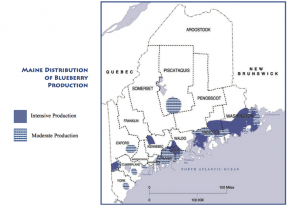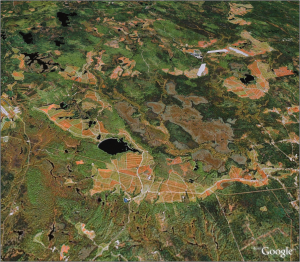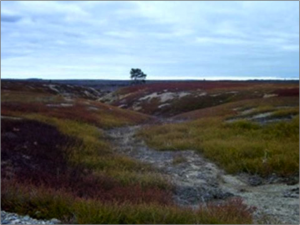Preservation by Celebration: Wild Blueberry Barrens of Down East Maine
This case study is the first of a series of case studies from North America to be featured on the World Rural Landscape Initiative. For more information about the project go to: http://www.worldrurallandscapes.org/

The vast wild blueberry barrens are endemic to the foggy coastal regions of Down East Maine and the Canadian Maritimes. The sandy soils and fog that frequently blanket the region on August mornings are believed to result in the high quality of wild blueberries. While there is no formal, concerted effort to protect them, a disparate collection of public agencies, private organizations, and Native American tribes are committed to their environmental stewardship.

Why is the project noteworthy?
The blueberry barrens have been tended since the last ice age, initially by First Peoples and later by European settlers. The 60,000 acres of treeless plains contrast with the surrounding forest. Traditionally burned and hand-harvested every two years, the wild blueberry barrens of Down East Maine continue to be harvested by members of the Micmac and Passamaquoddy tribes.

Objectives of the project and main measures to achieve them:
Down East Maine is the least developed region remaining on the East Coast of the United States. There is little development threat to the more inland core of the barrens. Greater concerns have been raised regarding pesticide use, labor issues, and fair prices paid to growers. Conservation groups are somewhat active in promoting the barrens for heritage tourism, and small acreages of barrens have come under protection, especially near the coast where modest development pressure does exist. The annual Machias Wild Blueberry Festival is internationally known and educates the visiting public about the important cultural geography of the barrens. Examples of preservation efforts include:
Beech Hill Preserve: Coastal Mountains Land Trust
Bog Brook Cove: Main Coast Heritage Trust
Blueberry Ledge: Coastal Mountains Land Trust
Cutler Coast Public Reserved Land
Thanks you to Duncan Hinchey, Consultant and Editor-in-chief, Journal of Agriculture, Food Systems, and Community Development
Ithaca, NY for this featured landscape.


